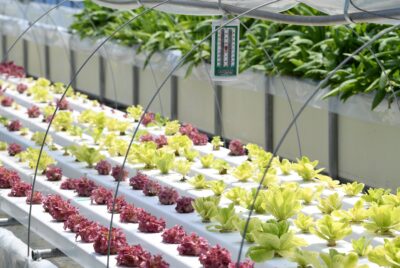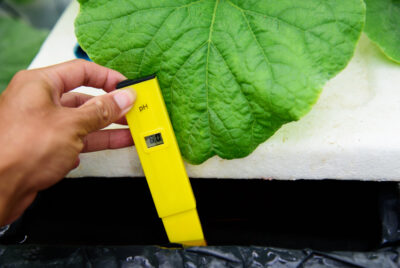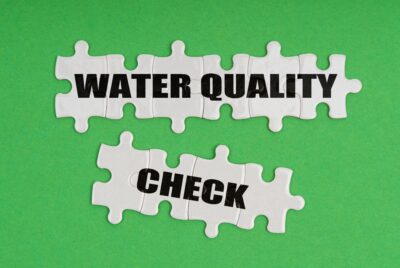Aeroponics
We may earn a commision from purchases made using our links. Please see our disclosure to learn more.
The Miraculous World of Aeroponics.
Hello, fellow gardening enthusiasts! Today, let me introduce you to the captivating world of aeroponics. Having been an indoor gardening aficionado for years, I’ve found this to be an innovative, highly efficient, and immensely productive way to cultivate plants. It’s a method that challenges conventional thinking, pushing the boundaries of what’s possible in indoor gardening.
Understanding Aeroponics
Before we delve into the practical aspects, it’s crucial to understand the science behind air culture. What is it? How does it work? And why does it matter?
The Basics
Aeroponic farming, which falls under the umbrella of hydroponics, is a plant-cultivation technique that’s truly remarkable. It diverges from the norm by growing plants in an air or mist environment—there’s no soil in sight, and very little water is used. The roots hang freely in the air, while a hydroponic fertilizer solution is misted directly onto them. It’s a set-up that offers everything the plants need for robust growth—nutrients, water, and oxygen—all within easy reach.
Benefits of Aeroponic Gardening
You might be wondering, why should I consider this type of soilless cultivation What makes it better? Well, there are several reasons. First and foremost, it uses up to 95% less water than traditional gardening. In a world where water conservation is a pressing issue, this is a significant advantage. Moreover, it eliminates soil-borne pests and diseases, which are often a bane for gardeners. The efficiency of this system means you can grow plants anywhere, regardless of the local soil quality or climate. Additionally, due to the ideal growth conditions, plants typically yield more than those grown using conventional methods.
How to Start with Aeroponics
Now that we’ve covered the why, let’s move on to the how. What do you need, and what steps should you take?
Essential Equipment for Aeroponic Gardening
Like any new endeavor, this requires some preparation. You’ll need a growing chamber to house your plants, a reservoir for the nutrient solution, a submersible pump to mist the solution, and misting nozzles to deliver it. A timer to control the misting cycle is also necessary. As for the plants themselves, you’ll need quality seeds or seedlings, and of course, the right hydroponic fertilizer solution.
Choosing the Right Plants
Aeroponic farming doesn’t suit all plants. Your best bets are fast-growing, small-rooted plants. Think herbs such as basil or mint, leafy greens like lettuce or spinach, and even some fruits like strawberries. Before you start, do some research to identify the plants that are likely to flourish in your aeroponic setup.
Caring for Your Aeroponic Garden
Once you have everything set up, the next step is ensuring your plants thrive. While this system is relatively low maintenance, it isn’t completely hands-off. There are a few routine tasks you’ll need to take care of.
Daily Care Routine
Regular checks are vital to the health of your aeroponic garden. You’ll need to ensure that the timer is set correctly, and the system mists properly. Moreover, monitoring the pH and nutrient levels of the solution is critical for the plant’s growth. Last but not least, observe your plants for any signs of distress, such as wilting or discoloration. Early detection of issues can make a world of difference in plant health.
Troubleshooting Common Issues
Just like any other gardening method, this system isn’t without challenges. You may encounter blocked nozzles that disrupt the misting process or an imbalance in the nutrient solution. However, these problems are easily solvable once you identify them, so regular inspection is key. Remember, a well-maintained system is the secret to a thriving garden.
Advancements in Aeroponics
As we move forward, so does the technology surrounding this method. This ever-evolving field has witnessed some incredible advancements in recent years. So, what’s new, and what’s on the horizon?
Recent Technological Developments
Smart aeroponic systems are making waves in the industry. If you use the correct hydroponic instruments and controllers, these systems can automatically adjust nutrient levels, pH, and misting intervals, taking much of the guesswork out of maintaining a garden. It’s easier than ever to ensure your plants are getting exactly what they need, exactly when they need it.
The Future of Aeroponics
The possibilities are virtually limitless. Consider its potential in vertical farming and urban agriculture, where space is at a premium. It could transform empty city rooftops into lush gardens, helping to combat food deserts and promote local produce. And let’s not forget its potential for off-planet cultivation. Yes, you heard me right—NASA is actively researching aeroponics for growing food in space!
Aeroponics vs. Other Indoor Gardening Techniques
By now, you’re likely wondering how aeroponic gardening stacks up against other indoor gardening techniques. So, let’s take a moment to compare it with hydroponics and traditional soil gardening.
Comparison with Hydroponics
Hydroponics and aeroponics share many similarities—they’re both soil-less methods that deliver nutrients via water. However, aeroponic gardening offers higher oxygenation, promoting faster growth. While both methods save water compared to traditional gardening, aeroponic gardening takes the cake regarding efficiency.
Comparison with Traditional Soil Gardening
When compared to traditional soil gardening, aeroponic farming stands out for its control over the plant environment and its ability to be done indoors year-round. Plus, it’s a cleaner process—no dirt involved! It’s a novel approach to gardening that allows you to defy seasons and grow your favorite plants anytime, anywhere.
Conclusion
If you’ve made it this far, aeroponic gardening has likely piqued your interest with its potential. And rightly so. In my years of indoor gardening, I’ve found it to be a game-changer. It’s efficient, eco-friendly, and yields impressive results. This may not be the traditional route, but it’s one that’s worth considering if you’re looking for an innovative, productive, and sustainable way to garden indoors.
FAQs
Is aeroponic farming suitable for all types of plants?
While it can support many types of plants, it’s best suited for fast-growing, small-rooted plants.
Can aeroponic cultivation be done outdoors?
While this type of soilless cultivation is typically used for indoor gardening due to its control over the environment, it can be done outdoors with the right set-up.
What are the primary challenges?
Blocked nozzles, incorrect nutrient levels, and pH imbalances are common issues. Regular monitoring and timely maintenance can help avoid these problems.
Does vertical aeroponic gardening need a lot of equipment?
It does require some initial setup, including a growing chamber, a reservoir, a pump, and misting nozzles. However, the investment is worth it considering the high yields and efficiency.
What’s the future of aeroponic gardening?
With ongoing technological advancements and increasing interest in sustainable farming, the future holds great promise in areas like vertical farming, urban agriculture, and even space cultivation.
Is aeroponic gardening better than hydroponic gardening?
Selecting the ideal system for your needs depends on various factors such as your level of expertise, available space, budget, and the specific plants you intend to grow





Comments are closed.